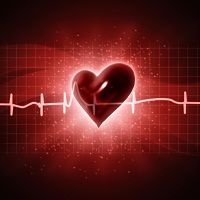Article
Fighting the Hollywood Heart Attack
Author(s):
In the Hollywood version of the heart attack, patients clutch their chests, gasp for air, and often keel over. Real life isn't usually like that. But the problem for cardiologists and other physicians whose patients have cardiac events, is that the patient may not realize he or she has had one.

In the Hollywood version of the heart attack, patients clutch their chests, gasp for air, and often keel over.
Real life isn’t usually like that. But the problem for cardiologists and other physicians whose patients have cardiac events, is that the patient may not realize he or she has had one. Reporting on the need to change public perceptions of heart attack symptoms, a team of researchers from Melbourne, Australia, looked at how patients who had suffered acute myocardial infarction (AMI) had initially perceived the meaning of their symptoms.
The results were disappointing, the team said in a poster session presented today at the 2014 American Heart Association Scientific Sessions.
Despite a decade of public education in Australia on heart attack symptoms, only 38% of patients in the study said that they recognized their chest pain for what it was—a symptom of a heart attack.
The patients surveyed were all admitted to a Melbourne hospital between July 2013 and April 2014. Their ages ranged from 35 to 75 and all were medically stable and not in residential care. Most (71%) were male, and 29% had a history of ischemic heart disease.
Yet most wrote their pain off as being stomach-related, muscular pain, or some other problem. Of those who correctly assessed the pain as a heart attack, the most common reason was that the pain was severe.
Researcher Janet Bray, of Monash University in Melbourne, concluded more public education is needed so that in the future these patients seek care immediately after having an AMI.
“In most AMI patients the symptom experience was different to what they expected a heart attack to be like -- this has not changed over the last decade,” Bray concluded in her poster abstract. “Interventions to address the public’s perception of the heart attack experience are still needed,” she said.





